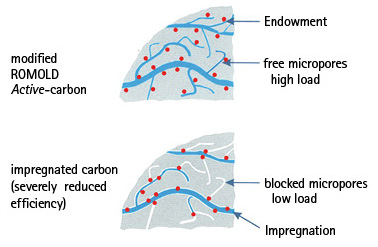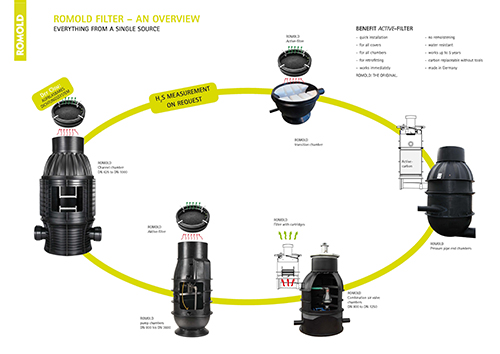ACTIV-CARBON-FILTER
UNIVERSALLY DESIGNED FOR ALL CHAMBERS
WHAT IS ACTIVATED CARBON?
Activated carbon is a highly porous carbon-based material which on account of its internal surface area binds atoms and molecules to this surface by means of an attractive force (adhesion). One gram of activated carbon has an internal surface area of 700-1800 m2. Activated carbon consists of micropores (up to 1 nm), mesopores (1-25 nm) and macropores (above 25 nm). Activated carbon has been mass produced since the early 20th century.
Activated carbon is a highly porous carbon-based material which on account of its internal surface area binds atoms and molecules to this surface by means of an attractive force (adhesion). One gram of activated carbon has an internal surface area of 700-1800 m2. Activated carbon consists of micropores (up to 1 nm), mesopores (1-25 nm) and macropores (above 25 nm). Activated carbon has been mass produced since the early 20th century.

MODIFIED ACTIV-CARBON
Activated carbon has long been available for use in removing odors – but Activ-carbon, with its catalytic effects, has only just become available for use in reducing H2S and odors. The secret lies in the patented manufacturing process (doping) that‘s used in the ROMOLD Activ-carbon product. Modified Activ-carbon begins working immediately through catalytic reaction without compromising the adsorptive capacity that comes from the surface coating (impregnation). This creates a seal in the micro- and mesopores which is critical for adsorption and thus significantly reduces the internal surface area and in turn the adsorptive capability..
The 5 g of internal surface area in the Activ-carbon is roughly equivalent to size of one football field. The carbon in a ROMOLD Activ-filter has the internal surface area of 500 football fields. Whether on hot or cold days, damp or dry. The Activ-filter maintains its effectiveness over time (day after day). With patented, modified Activ-carbon from ROMOLD, the problem of eliminating odors is resolved through catalytic conversion.
ROMOLD Activ-carbon is a product of the BMWi program „Network Management East (NEMO)“ under the direction of the „Fraunhofer Institute for Environmental, Safety and Energy Technology UMSICHT“. It is industrially produced and its effectiveness can be verified through both practical and computational methods.



ADSORPTION PERFOMANCE
The Activ-filter is specially designed for elimination of hydrogen sulfide and ammonia.
But because of the special manufacturing process of the activated carbon that is used, other
aromatic substances which are typical of wastewater can be absorbed through adsorption processes and odors can thus be largely eliminated.
The adsorption occurs primarily in the micro- and small mesopores. The size of the pores and the distribution of the pore size together determine the adsorption characteristics of individual substances, independently of their size and chemical properties.
PHYSICAL ADSORPTION AND CHEMIESORPTION
Non-polar substances (e. g., hydrocarbons) are adsorbed on the Activ-carbon (=physical
adsorption) very efficiently. The adsorption performance of polar substances (e. g., H2S) on activated carbon can be increased through specific adsorption and surface reactions (= chemisorption).
WHEN ODORS ARISE
The problem: the population consumes less water, while the sewer networks are oversized. At the same time, the quantity of industrial waste waters is increasing. Sometimes it stinks to high heaven, and not just on hot days. The Activ-carbon itself is resistant to moisture and dryness. At no time is there a risk of clumping or airtight closure of the chambers (as occurs with other systems).



